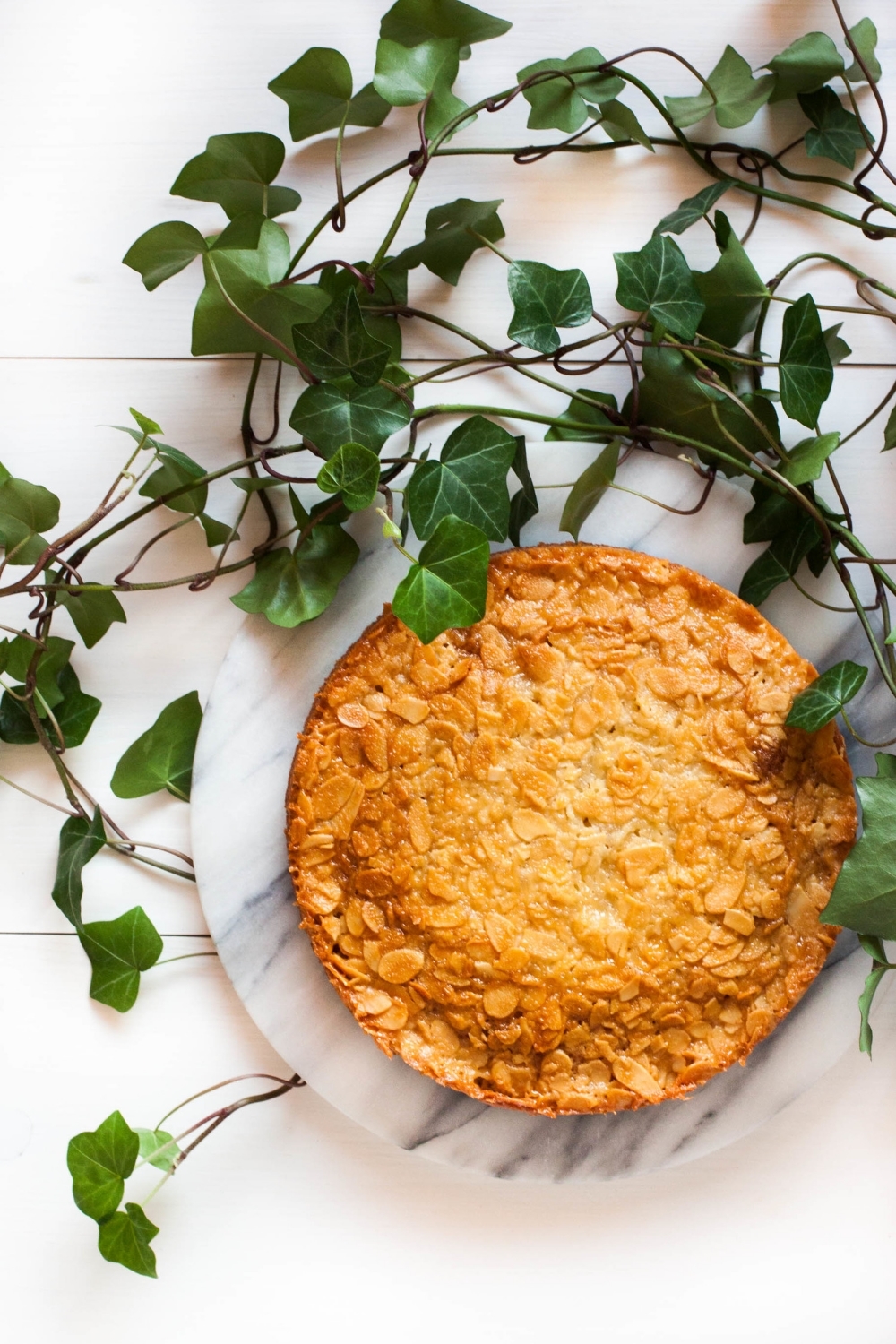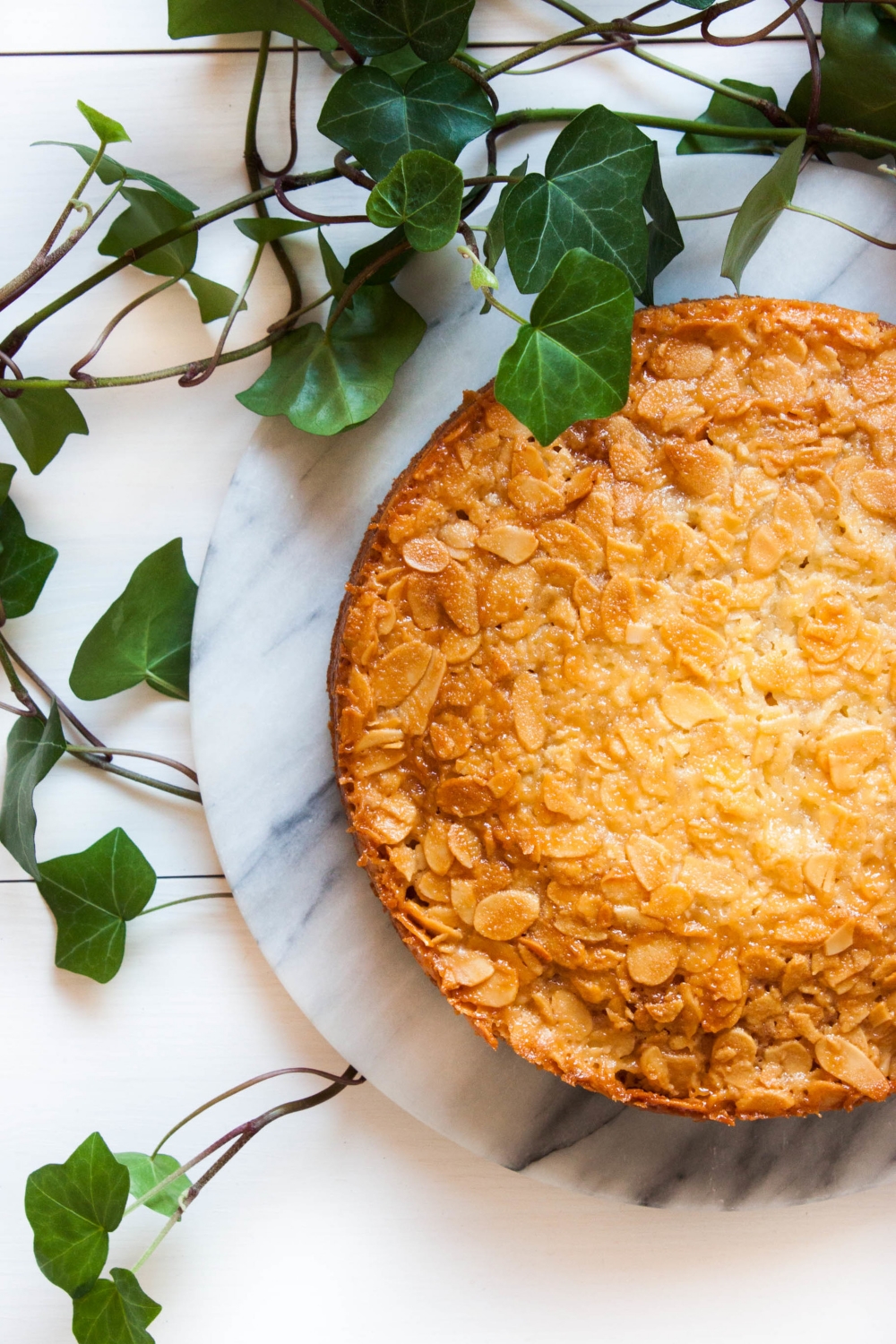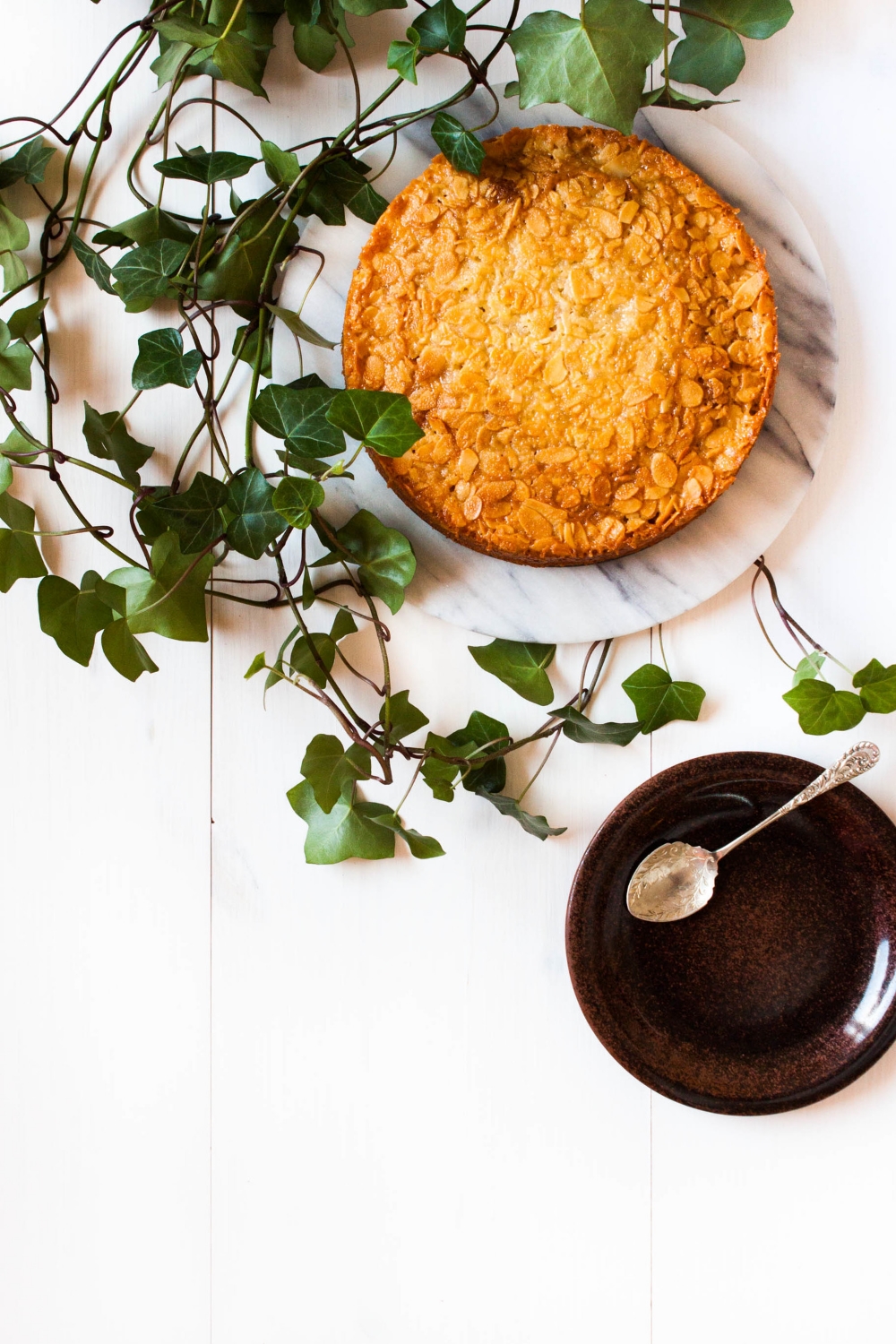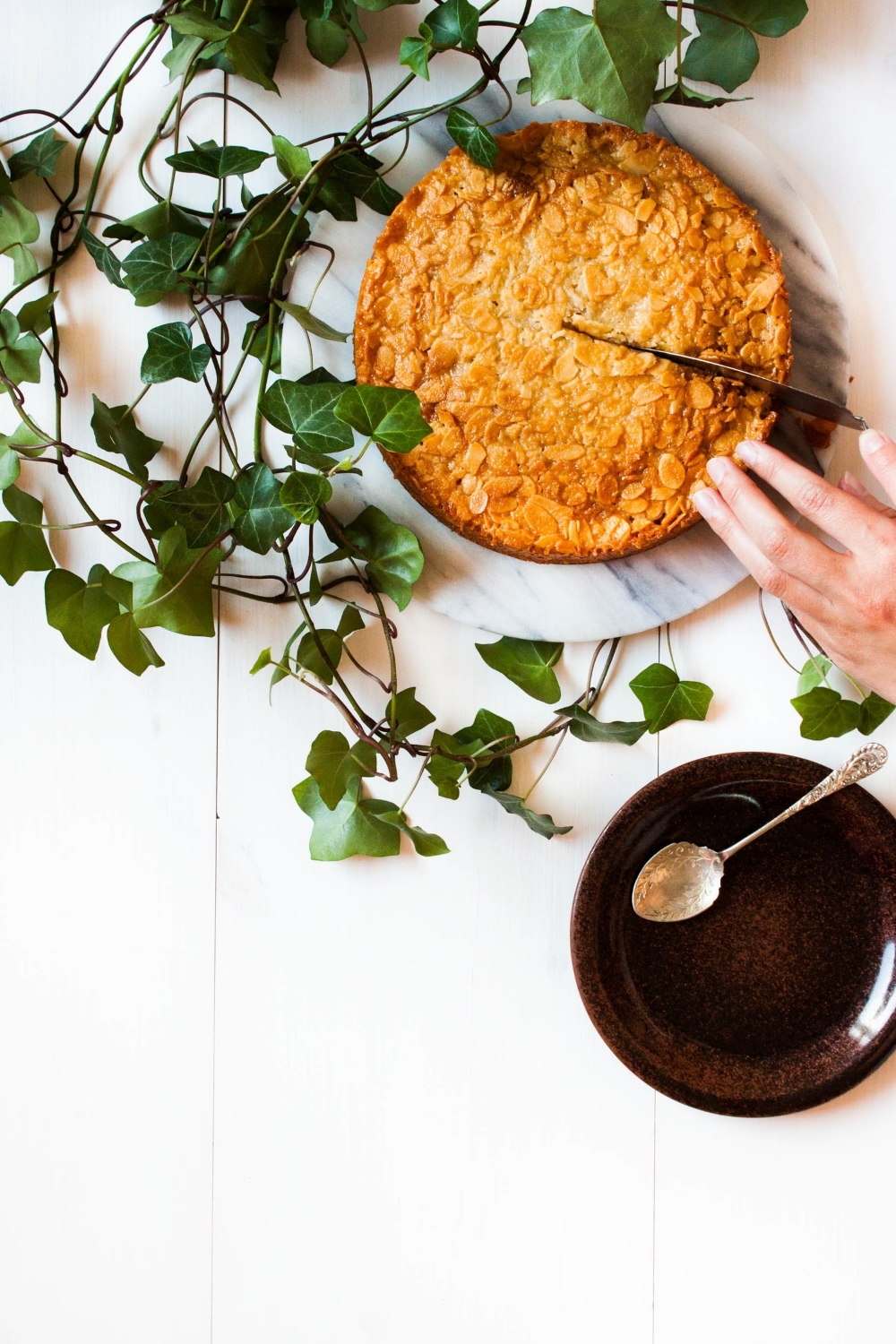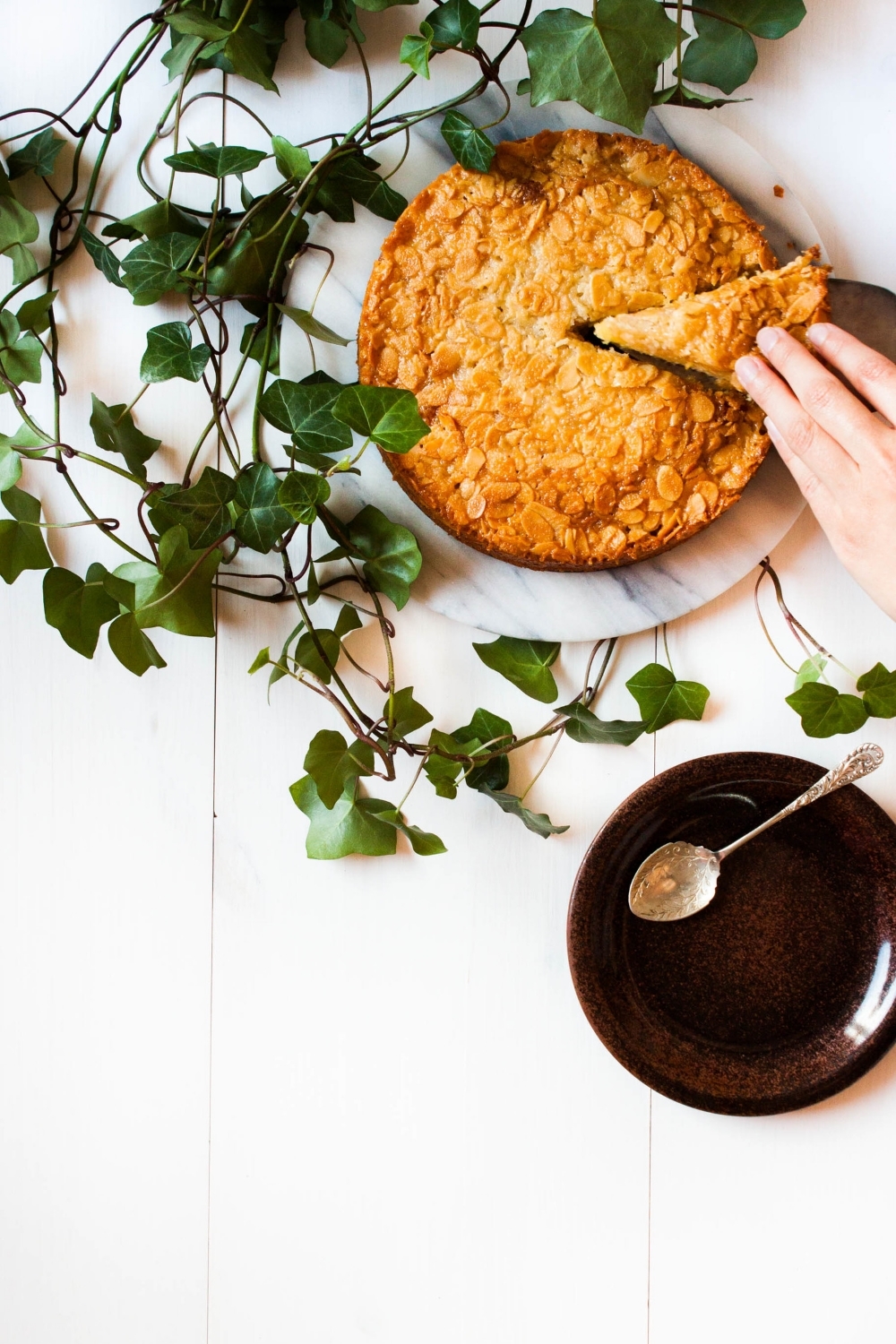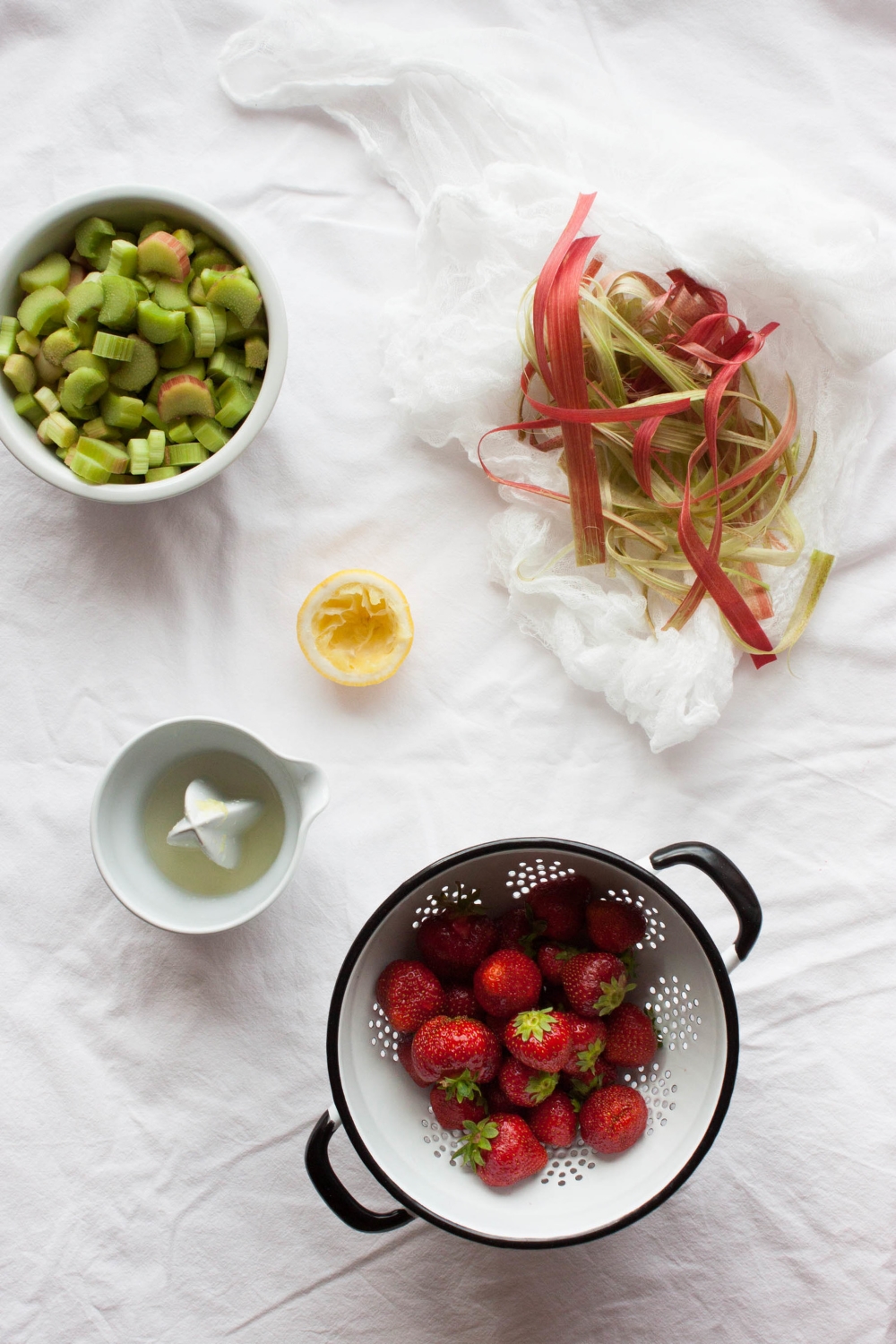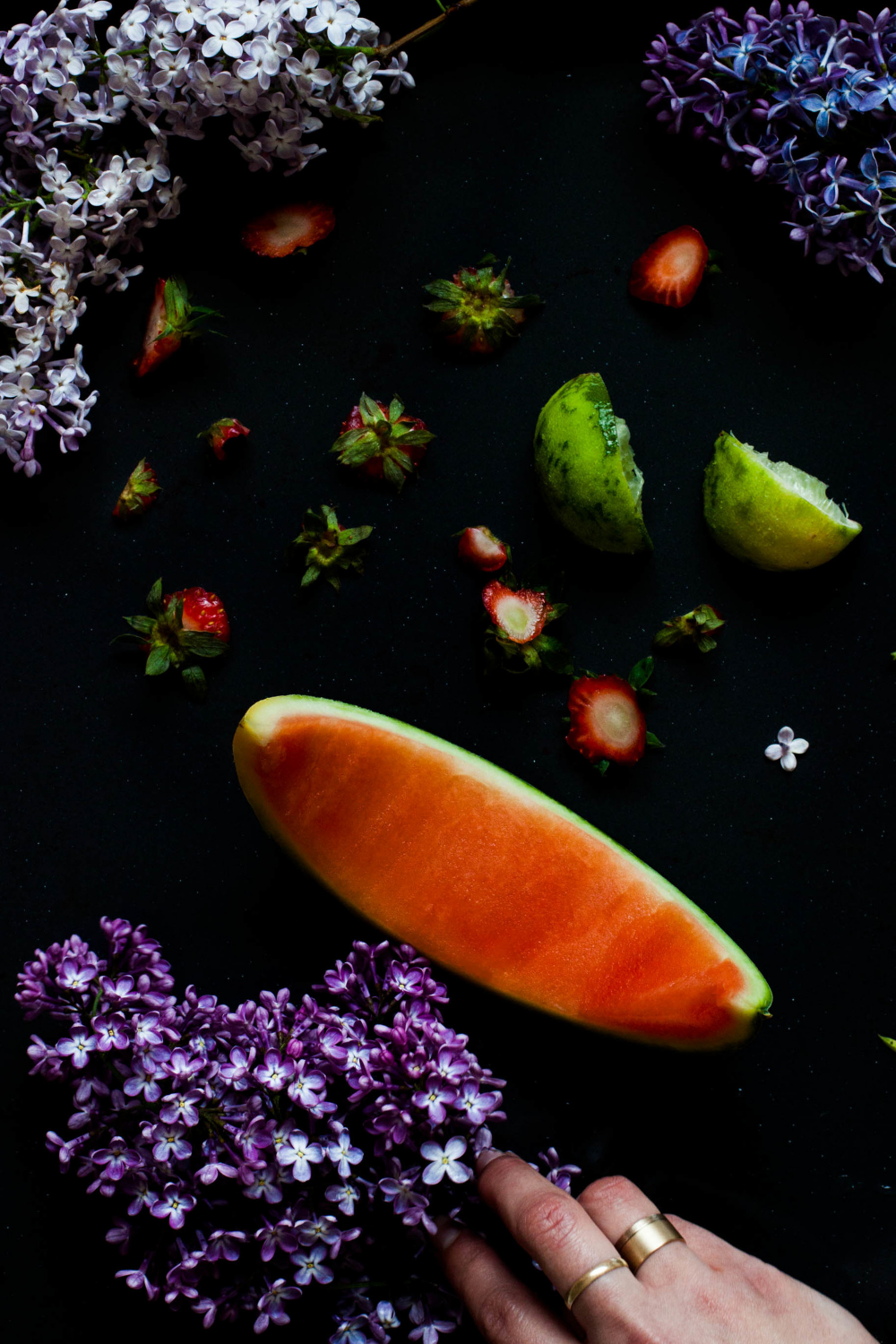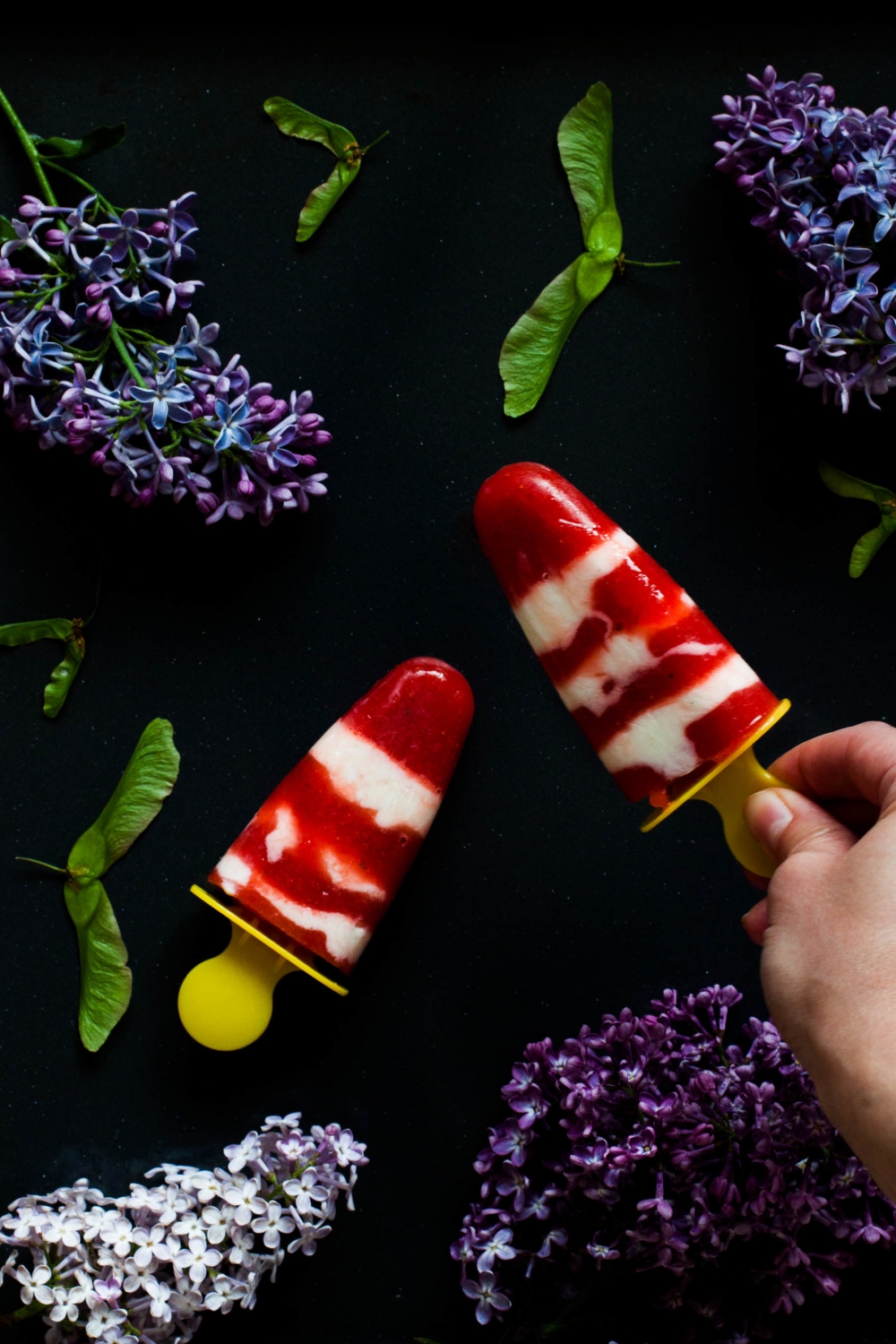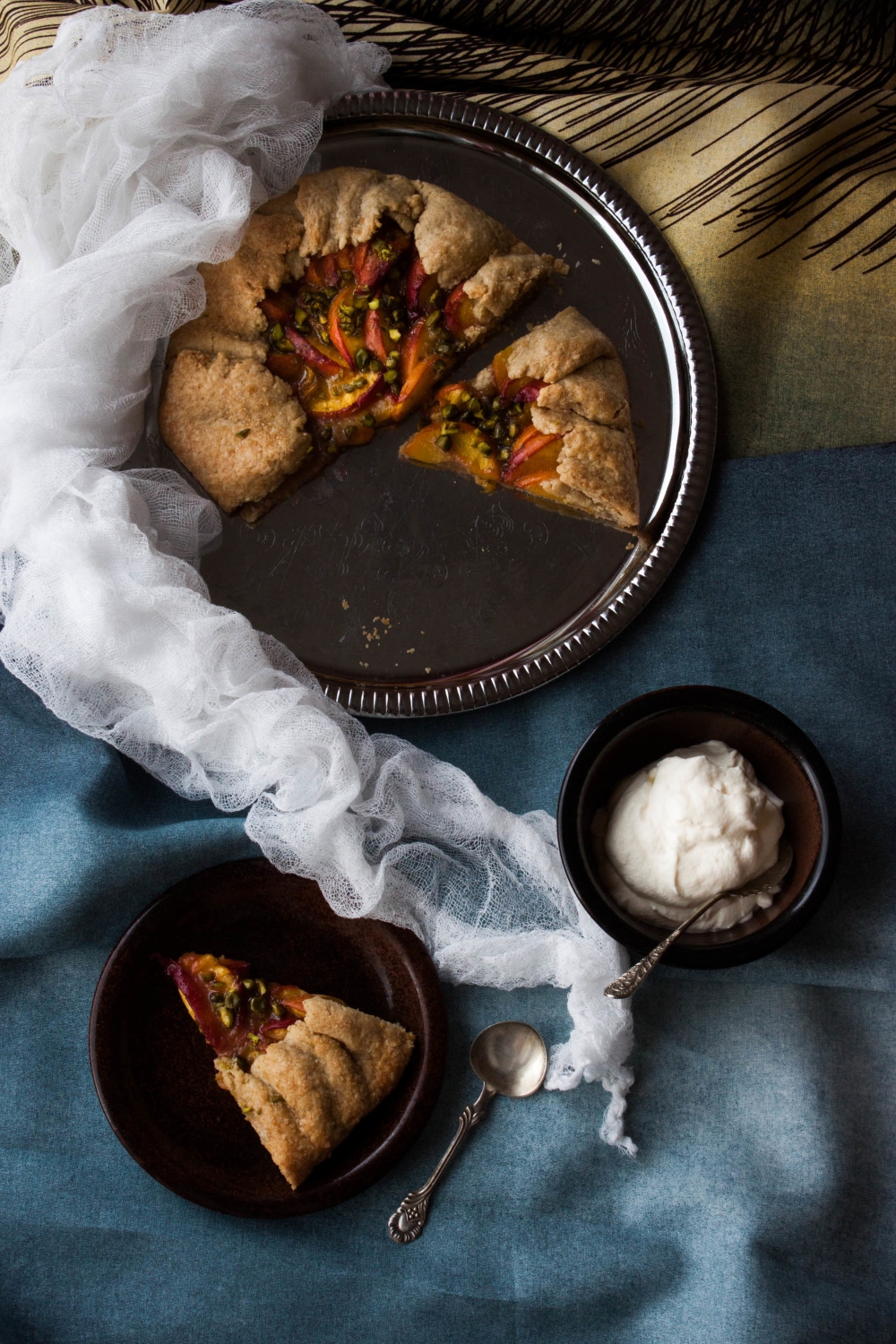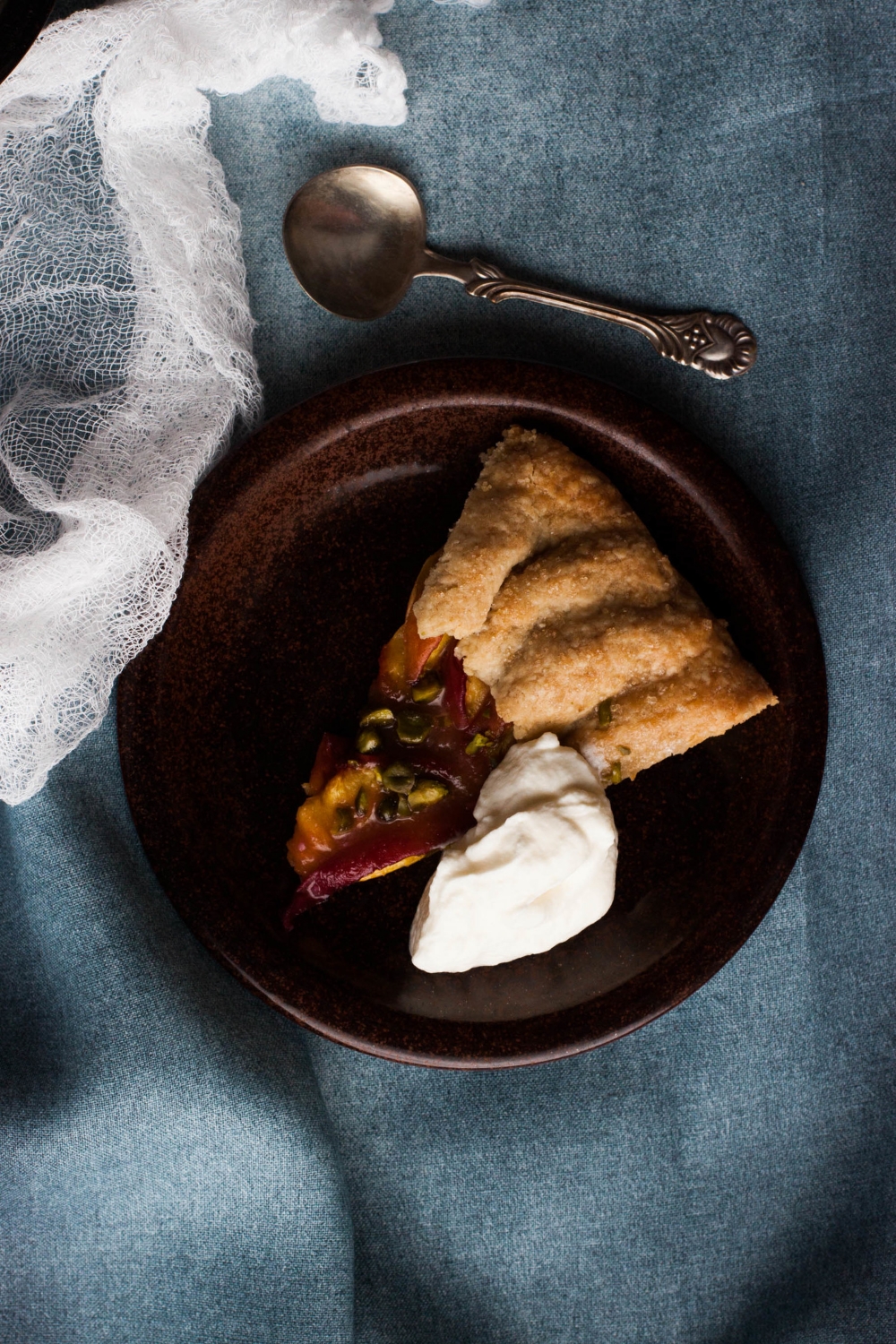June was rather cold and gloomy at our latitude. Therefore, these warm, sunny days we have been fortuned enough to enjoy during the last few days have felt like a true blessing. However, I must admit that I wasn't that annoyed by the bad weather we had to endure for way too many weeks. This probably is because life at the summer cottage feels relaxing and wonderful no matter how the sky looks like outside the windows. But now that the sun is shining again, I notice how much I need the smell of sun-kissed skin.
This summery weather also brings lovely mornings with it; I make it my ritual to enjoy breakfast on the porch. On mornings like these, breakfast feels extra special. Normally, I eat a slice of good bread (after a short pause, I'm back in the no-knead bread baking madness experimenting with different flours and proofing times) or a bowl of plain yogurt with homemade granola. These days, strawberries can be found on the table as well. As I drink my regular cup of strong coffee with milk, I listen to baby birds peeping vigorously for food, watch squirrels climbing from one tree to another and eating pine cones like they're bacon & sweet corn ice cream sandwiches, and let my eyes linger on the beautiful Nordic lake scenery. I take a deep breath and my mind and body seem to find peace if only for a brief moment.
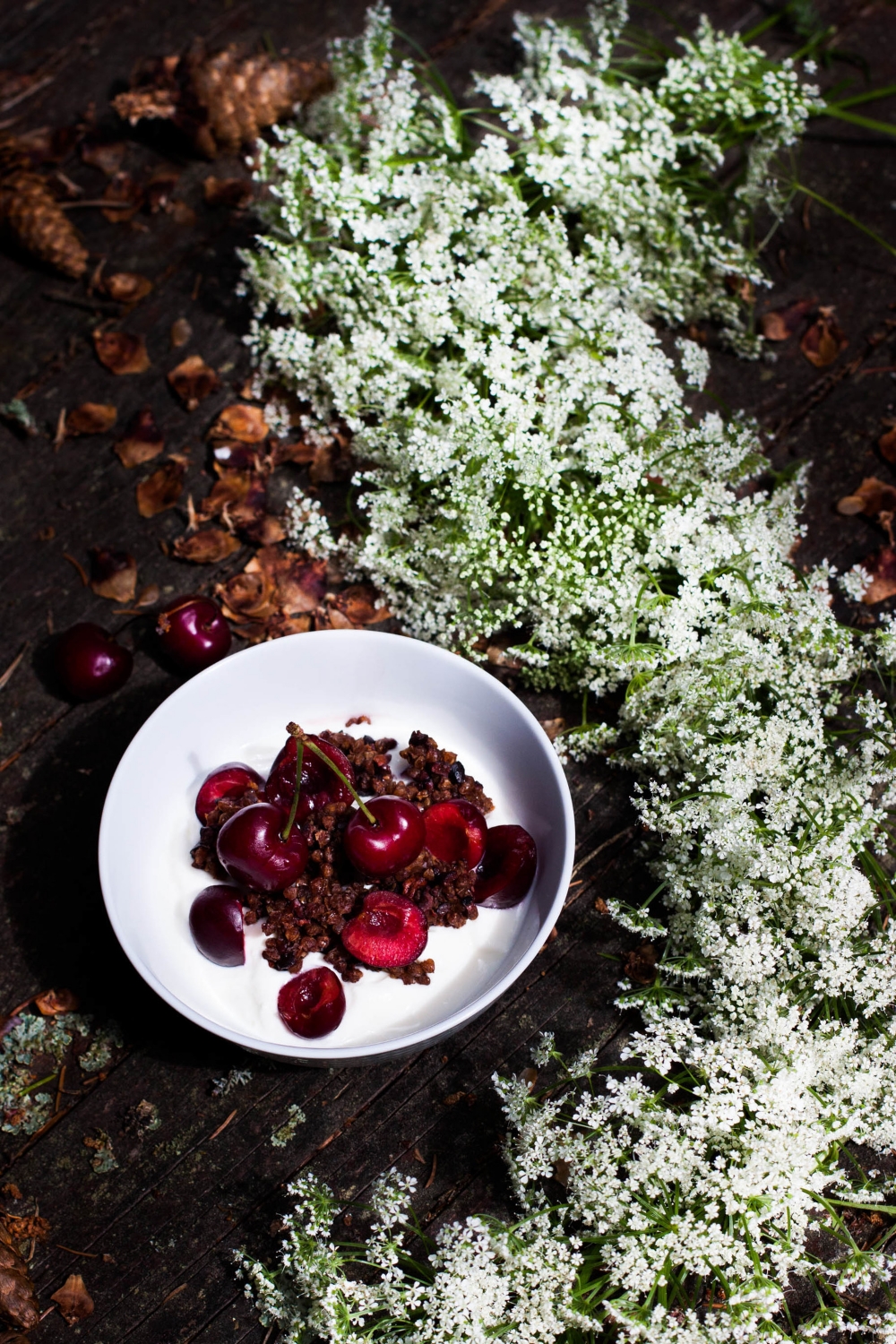

I was beyond excited when The Vibrant Table cookbook arrived at my doorstep. I found myself coming back to it multiple times a day; whether it was reading about the benefits of soaking and sprouting or flipping through the pages getting inspired by the recipes and pictures. I love when food becomes a way of expressing ones heritage and love for food. This book reflects both in such a wonderful way. I admire how Anya uses ingredients that are often forgotten or overseen, such as rutabaga and buckwheat groats, or interprets Russian favorites in a new way, such as zapekanka, a kind of cheese soufflé. The Vibrant Table is not only a gorgeous cookbook filled with seasonal recipes for every occasion but also a helpful, easily approachable guide to a wholesome, clean, and thoughtful diet.
This buckwheat granola was one of the first recipes that caught my attention and made my heart beat a bit faster. I could eat granola every single day of the year without getting bored as there are so many ways to keep a granola interesting and seasonal. After making multiple batches of this buckwheat granola, I can say I absolutely love it! In her book, Anya tells that it can be made with raw buckwheat groats or with buckwheat crispies (she also gives a recipe for raw granola but since I don't have a dehydrator I've not made this version and, thus, I'm not going to share that recipe with you today). Buckwheat crispies are simply buckwheat groats that have first been soaked and then dried again. Soaking not only makes grains more nutritious but also easier to digest (yes, these are the kind of things you learn from the book!). I made the granola both with raw groats and buckwheat crispies and liked the latter better; the flavor was enhanced and the texture was nicer as the granola didn't turn out that hard. You can of course go both ways. Soaking and drying takes a bit time but is by no means much work.
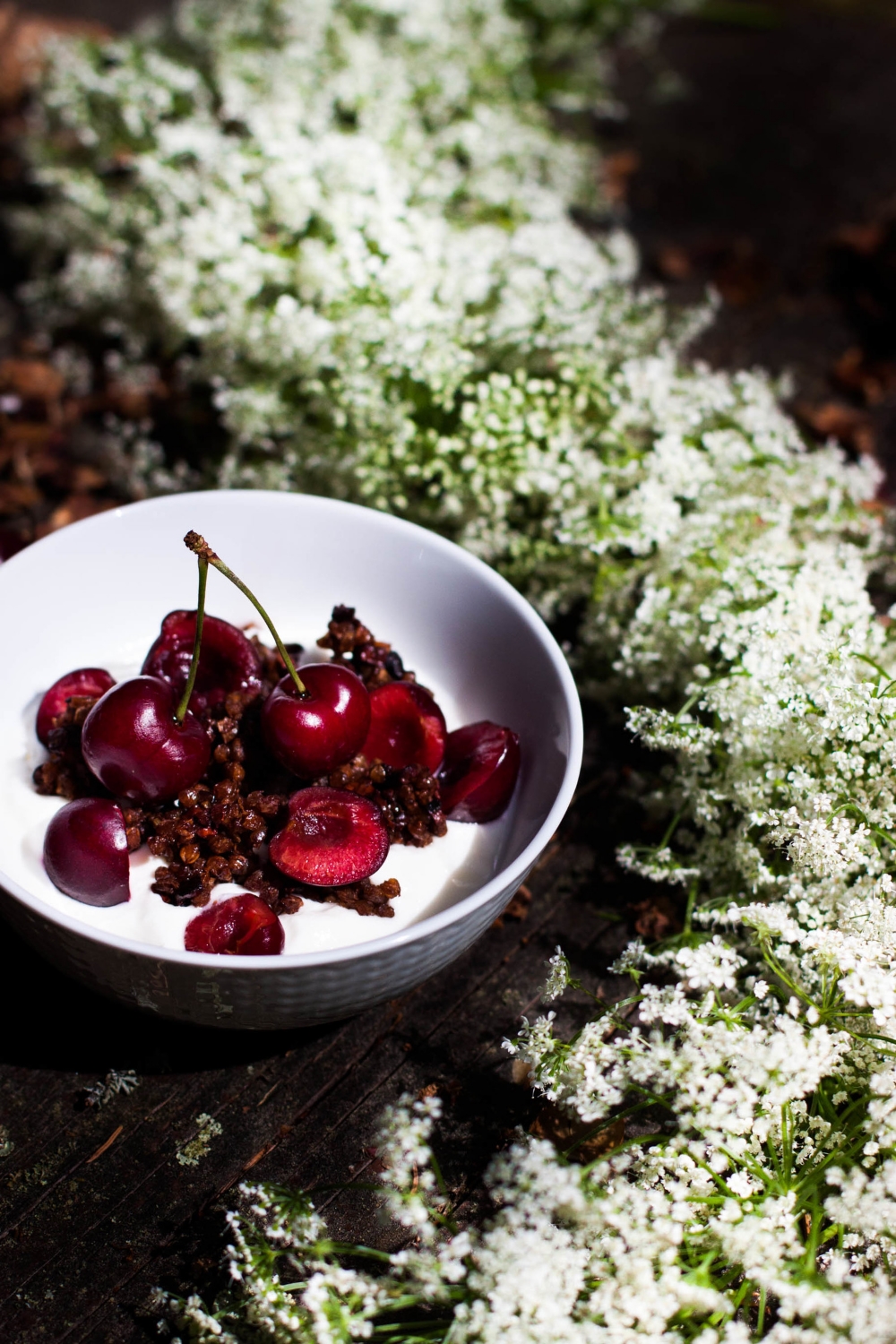
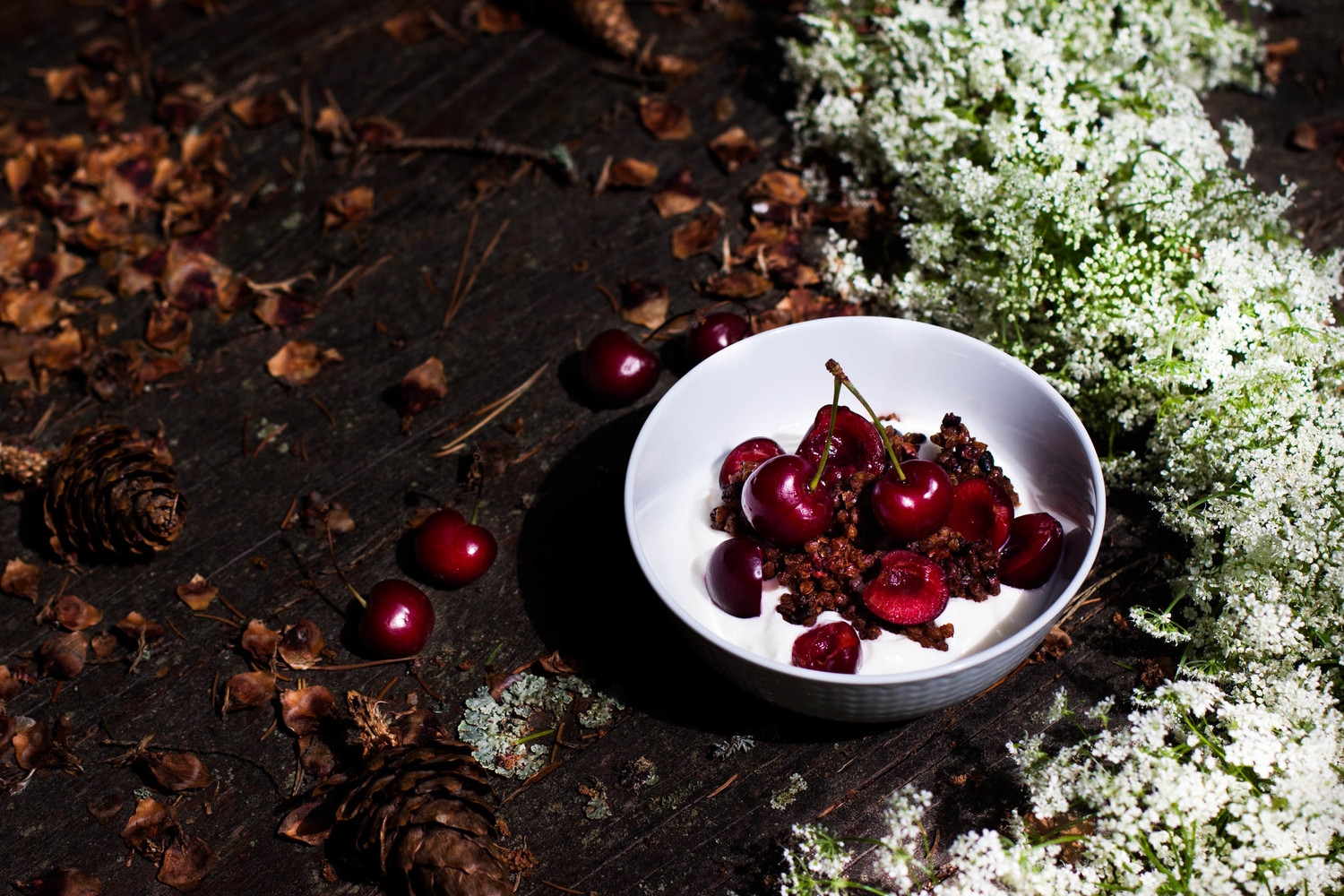
The original recipe calls for cacao nibs only. I, however, decided to share a double cacao version where I added some raw cacao powder to make it extra luscious. With the cherry season nearing its peak, I've enjoyed this granola with a handful of fresh, sweet cherries. However, now that bilberry season has started, and you can regularly find me picking bilberries in the woods until my hands are stained blue and my back is sore, I'm going to replace cherries with fragrant, local bilberries. However, feel free to play around with this recipe! You can add different seeds, grains (I would love to try a version with millet!) or nuts to the basic granola and once baked dried berries or fruit. You can sweeten the granola with maple syrup or use honey or agave nectar instead. I even substituted coconut oil with melted butter once and it worked perfectly. This is a granola that can easily be adapted to your liking and the current season.
Double Cacao Buckwheat Granola
slightly adapted from The Vibrant Table, p. 55
makes 6 dl (2 ½ cups) granola
Note: At least in Scandinavia and Germany, most buckwheat groats that you can find at stores are rather light in color. As I've been told that the darker varieties have a much better aroma, I always strive to find those. Here in Finland, it's mostly Russian buckwheat that can be found in some ethnic markets or in the specialty section of a grocery store.
This granola is both gluten and dairy-free.
For the buckwheat crispies [makes about 380 g (2 heaping cups) buckwheat crispies]
400 g (4 ¾ dl; 2 cups) raw buckwheat groats
In a large bowl, cover the groats with water. The water level should be 2,5 to 5 cm (1" to 2") above the groats. Let soak for a minimum of one hour or overnight.
Pour the soaked groats into a colander. As raw buckwheat produces slime when soaked, you need to rinse the soaked groats well. Line two baking sheets with clean kitchen towels. Spread the rinsed groats on the towels and let dry for at least 24 hours or until completely dry. You may need to shake the sheets a couple of times while drying to ensure that the groats dry evenly.
Buckwheat crispies should be stored in an airtight container in the fridge and will keep for up to 1 month. You can use the crispies to make granola or, for example, use in salads, tacos, etc.
For the granola
4 ¾ dl (2 cups; weight varies from 310 to 340 g) buckwheat crispies (see instructions above)
OR 400 g (4 ¾ dl; 2 cups) raw buckwheat groats
70 g (1 dl + 1 heaping tbsp; ½ cup) cacao nibs
1 tbsp raw cacao powder
2 tbsp + 1 tsp maple syrup
3 tbsp coconut oil, melted
yogurt or milk as well as seasonal berries or fruit, to serve
Preheat oven to 130°C (260°F). Line a baking sheet with parchment paper.
Place all ingredients in a medium-sized bowl and mix to combine. Spread in an even layer on the baking sheet and bake for 1 hour.
Let the granola cool completely before breaking it into rough chunks. Store in an airtight container in the fridge. The granola will keep for up to 1 week. Personally, I think that, like many other granolas as well, the flavor develops overnight.



